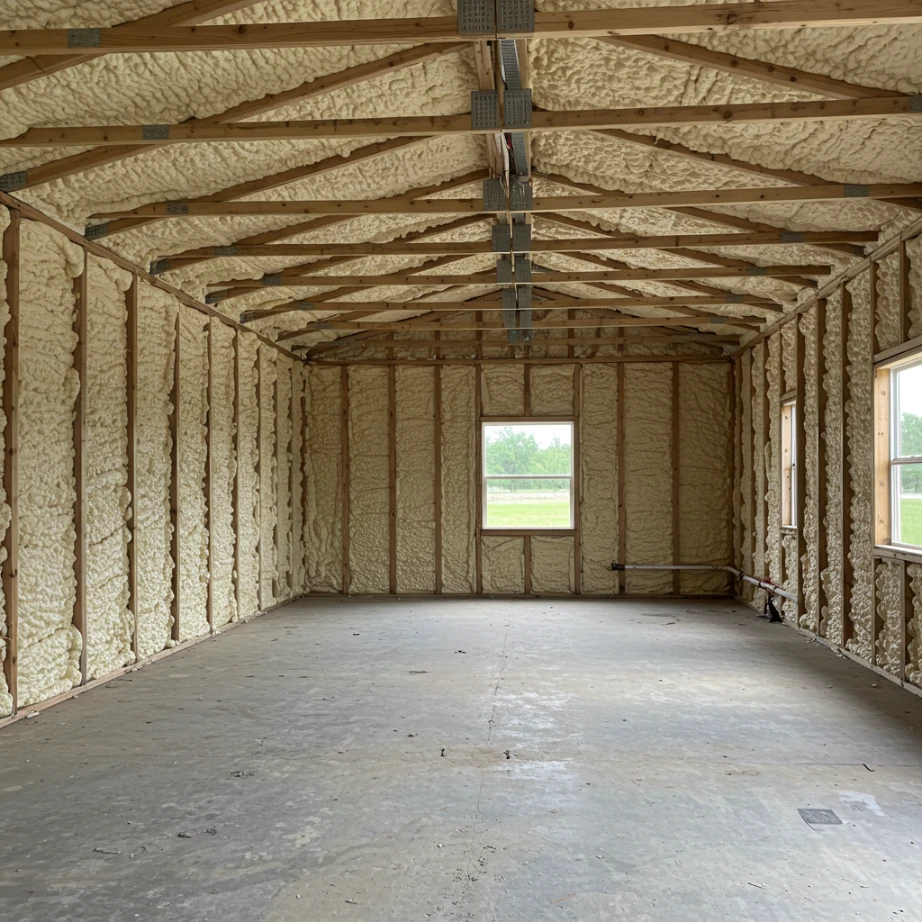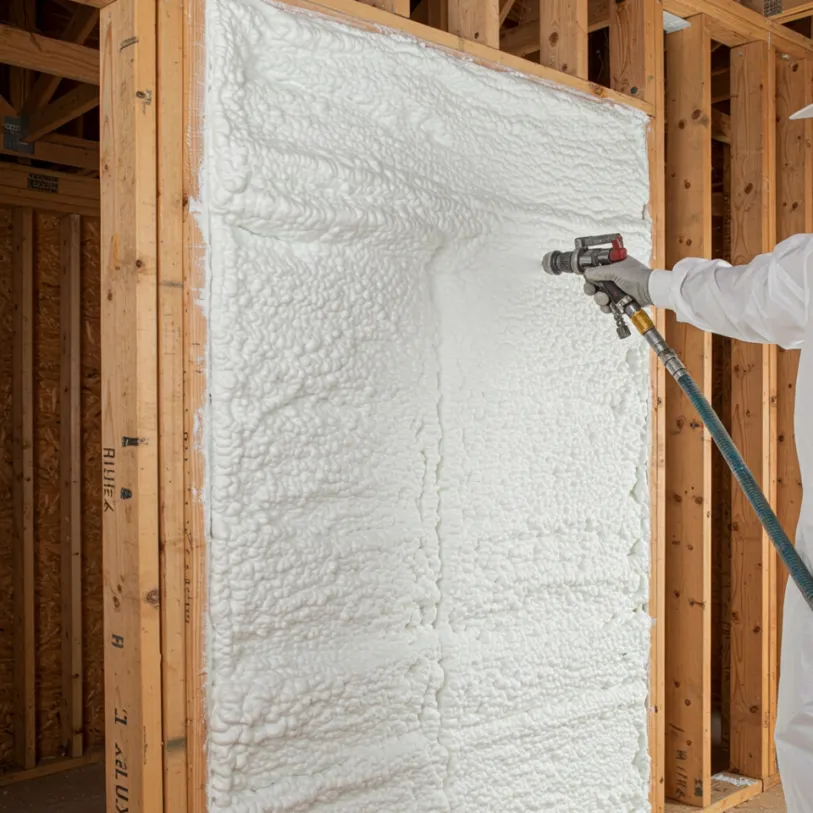

A hot, stuffy upstairs is a common frustration for homeowners, especially during warmer months. The primary reasons for this temperature difference are simple physics. First, heat naturally rises in a process known as the stack effect, where warmer, less dense air moves upward. Second, your roof absorbs a tremendous amount of solar heat. Without an effective thermal barrier, that heat radiates from the attic directly into your upstairs living spaces, making them uncomfortable and forcing your air conditioner to work overtime.
This problem is almost always linked to insufficient or poorly installed attic insulation. A properly insulated and air-sealed attic acts as a shield, preventing outdoor heat from entering the home and keeping conditioned air from escaping. This guide explains the science behind the problem and details how upgrading your insulation provides a permanent solution. Cascadia Spray Foam of Seattle brings years of building science expertise to help homeowners understand and fix these temperature imbalances for good.
Understanding why your second floor feels like an oven involves looking at how heat moves through your house and enters from the outside. Three main factors are usually at play.
The stack effect is the natural movement of air through a building. In the summer, warm air generated inside your home from cooking, appliances, and people rises. This warm air creates higher pressure on the upper levels. If there are air leaks in your attic floor, this warm air pushes its way into the attic. At the same time, this upward movement creates lower pressure in the lower levels of your home, which pulls in unconditioned air from outside and exacerbates the temperature imbalance.
Your roof is your home’s first line of defense against the sun, but it can also be a major source of heat gain. A report from the U.S. Department of Energy explains that a traditional dark-colored roof can reach temperatures of 150°F or more on a sunny day. This intense heat is transferred through the roofing materials and into the attic space. Without adequate insulation on the attic floor, that radiant heat passes directly through the ceiling and into your upstairs rooms, raising the temperature significantly.
Many homes have a single, centrally located HVAC system that wasn’t designed to handle the different heating and cooling loads of a multi-story house. The thermostat is usually on the first floor, so it shuts the AC off once the downstairs area reaches the set temperature, leaving the upstairs to bake. This strain is significantly worsened by constant heat gain from a poorly insulated attic, as the system has to work much harder to push cool air to the highest point of the house while struggling to keep up.
The most effective way to combat a hot upstairs is to stop the heat transfer at its source: the attic. This involves creating a complete thermal and air barrier between your living space and the unconditioned attic.
Insulation’s performance is measured by its R-value, which indicates its ability to resist heat flow. The higher the R-value, the better the insulation. For the Pacific Northwest climate, ENERGY STAR recommends an attic R-value of R49 to R60. A thick, continuous layer of insulation on the attic floor effectively stops the radiant heat from the roof from penetrating your living space.
Insulation can’t do its job properly if air is allowed to move through it. Small gaps and cracks around light fixtures, plumbing pipes, attic hatches, and electrical wiring allow hot attic air to leak into your home and conditioned air to escape. This is where many traditional insulation types fall short.
Bonus Tip: Before adding more insulation, it’s essential to seal these air leaks first. Using caulk or foam for small gaps and rigid foam board for larger openings can dramatically improve the performance of any type of insulation.
Spray foam insulation is unique because it provides both a thermal barrier and an air seal in a single application. As it’s applied, it expands to fill every crack and crevice, creating a seamless, airtight barrier that traditional insulation can’t match. This dual action is what makes it so effective at controlling temperature.
Different insulation types offer varying levels of performance. Understanding their characteristics helps in making an informed choice.
| Insulation Type | Typical R-Value (per inch) | Air Sealing Ability | Moisture Resistance |
|---|---|---|---|
| Fiberglass Batts | R-3.1 to R-3.8 | Poor | Poor (can trap moisture) |
| Blown-In Cellulose | R-3.2 to R-3.8 | Fair (settles over time) | Fair (treated but can absorb water) |
| Open-Cell Spray Foam | R-3.5 to R-4.0 | Excellent | Good (allows water to pass through) |
| Closed-Cell Spray Foam | R-6.0 to R-7.0 | Excellent | Excellent (acts as a vapor barrier) |
Before you invest in new insulation, there are a few factors to evaluate to ensure you get the best results for your home.
The first step is to see what you’re working with. You can do a quick visual inspection of your attic. Is the insulation level below the top of your floor joists? Is it patchy, compressed, or water-stained? If so, it’s likely underperforming. Use a ruler to measure its depth. Generally, to achieve the recommended R49, you’d need about 16 inches of fiberglass or cellulose, or about 7-8 inches of closed-cell spray foam.

Proper attic ventilation is just as important as insulation. Your attic needs a way for hot, moist air to escape. This is usually accomplished with a system of soffit vents (intake) and ridge or gable vents (exhaust). Insulation and ventilation work together to keep your attic cool and dry.
Bonus Tip: Make sure any new insulation doesn’t block your soffit vents. Installing baffles can ensure that airflow from the soffits is maintained, which is essential for preventing moisture buildup and ice dams in the winter.
While high-performance insulation like spray foam can have a higher initial cost, it often provides greater long-term value. By creating a superior air seal, it can significantly reduce energy consumption. According to the Environmental Protection Agency, homeowners can save an average of 15% on heating and cooling costs by air sealing their homes and adding insulation in attics and crawl spaces. These savings can help the project pay for itself over time.
Choosing the right insulation solution depends on your home’s construction, your budget, and your long-term goals. A professional assessment can identify air leaks, check ventilation, and determine the most effective strategy for making your entire home more comfortable and energy-efficient.
For a detailed evaluation of your home’s insulation needs, you can contact Cascadia Spray Foam of Seattle. To discuss your project, call (425) 386-3500 or send an email to [email protected]. An experienced technician can provide a clear plan to solve your hot upstairs problem for good.
Heat rises naturally, and your roof radiates solar heat down through an under-insulated attic into your upper rooms.
It measures heat resistance; a high R-value (R49-R60) in your attic is essential to block heat transfer from the roof.
If it’s below the floor joists or looks patchy and compressed, it’s underperforming and needs to be upgraded.
Yes, but only if the existing insulation is dry and undamaged; otherwise, it should be removed before installing new material.
Yes, it offers superior air sealing and insulation combined, providing greater long-term energy savings that justify the cost.


